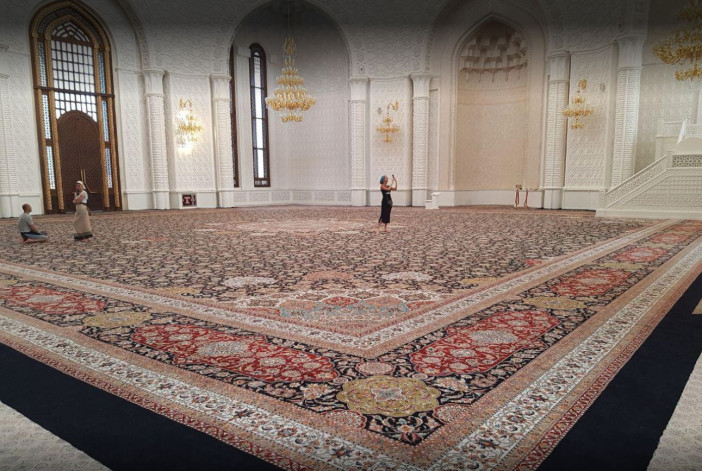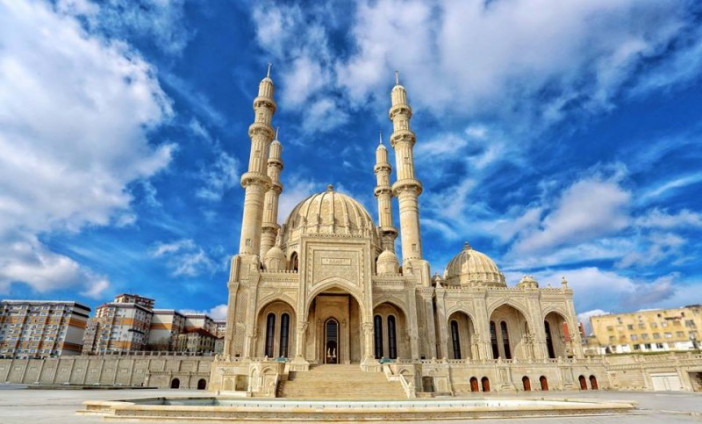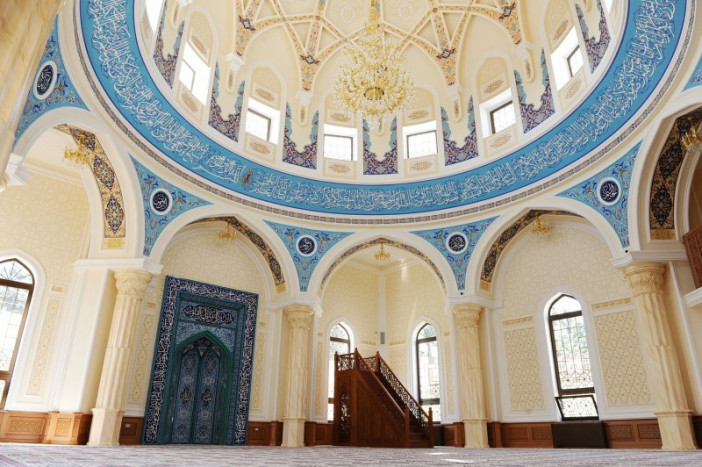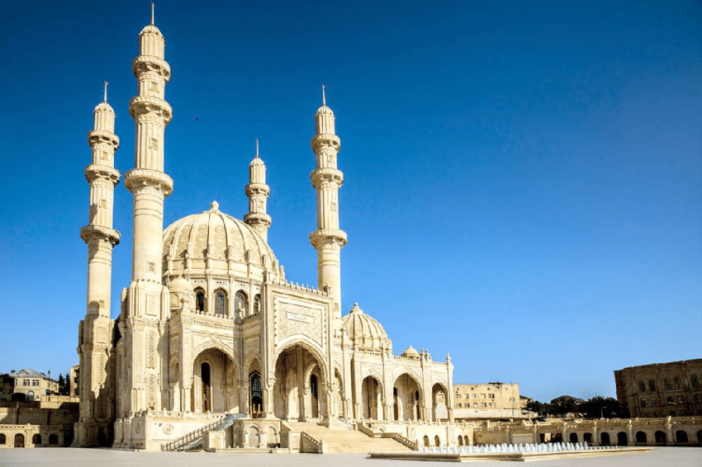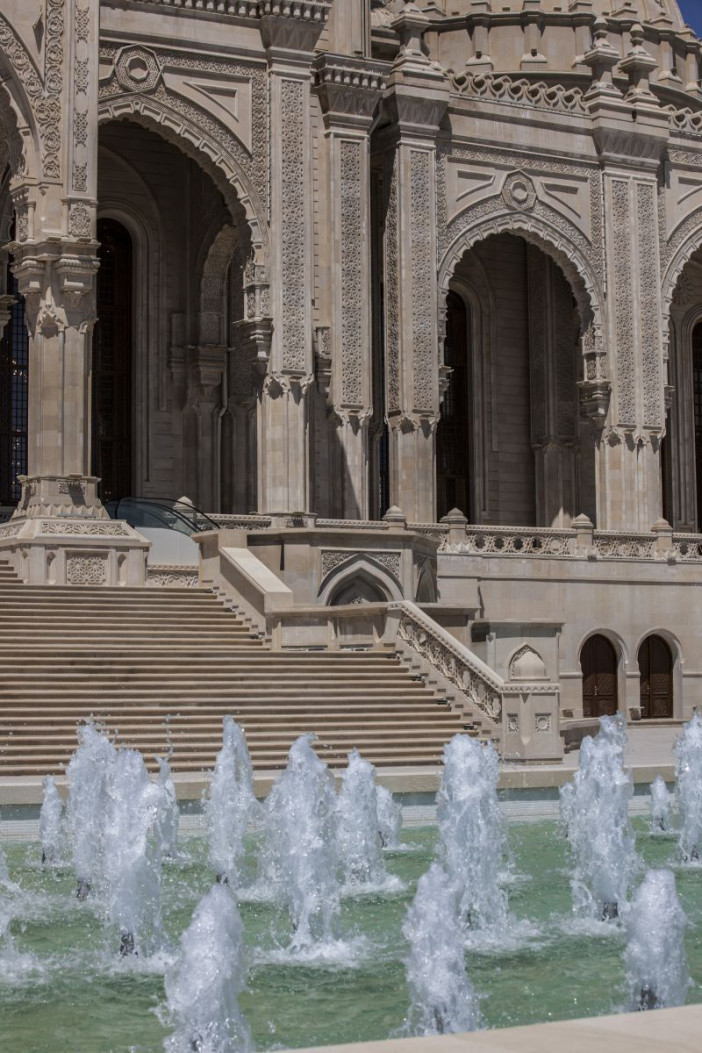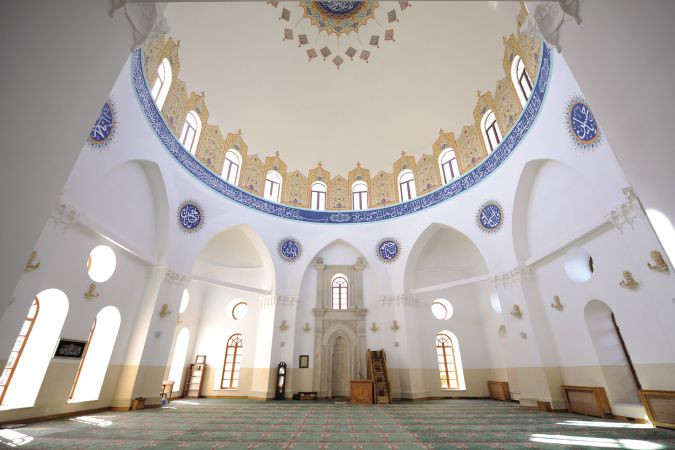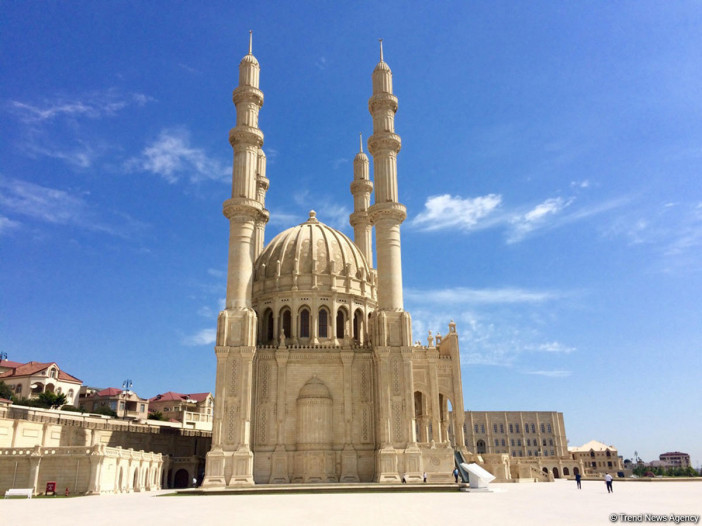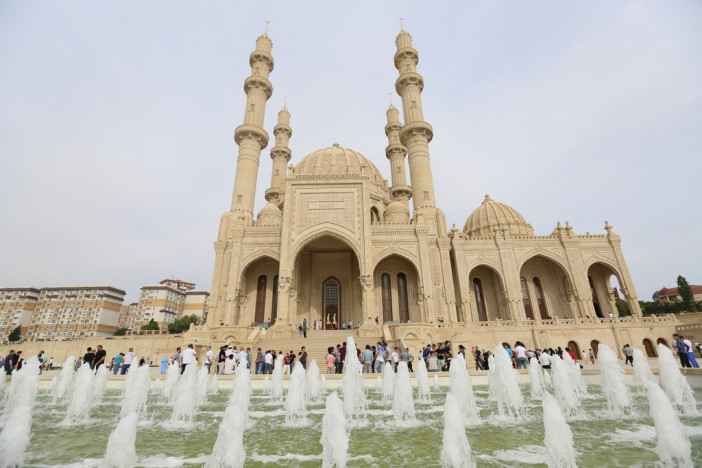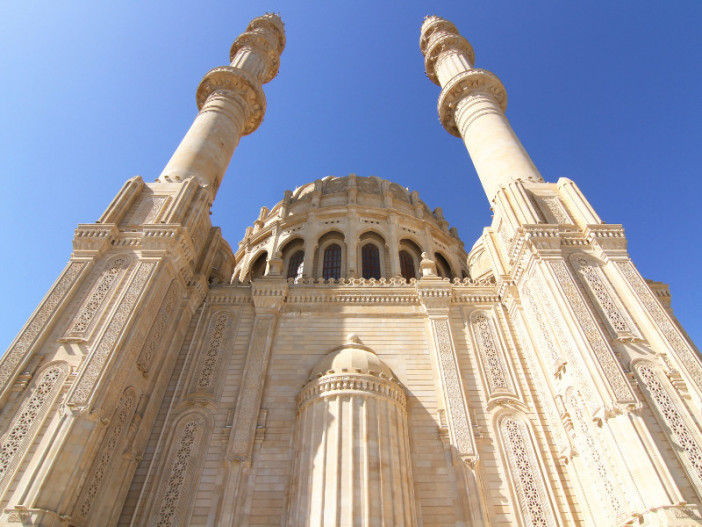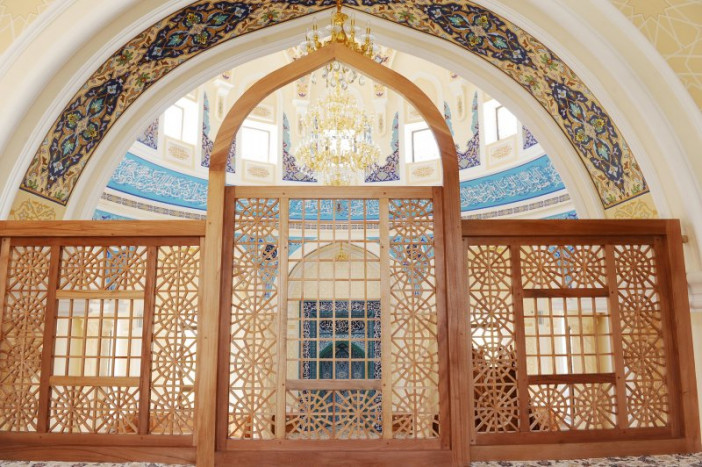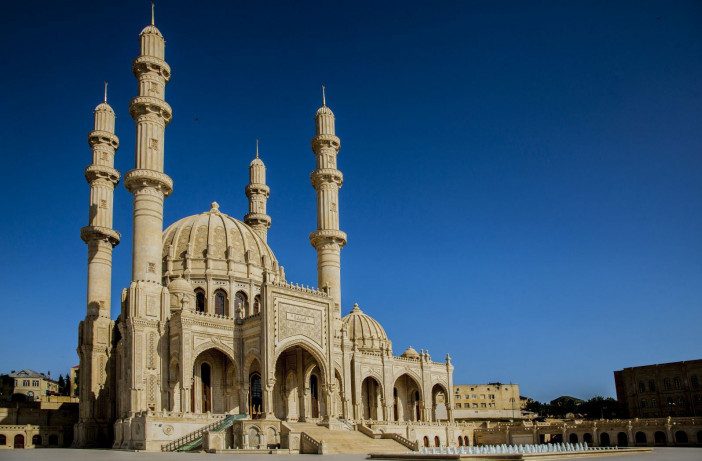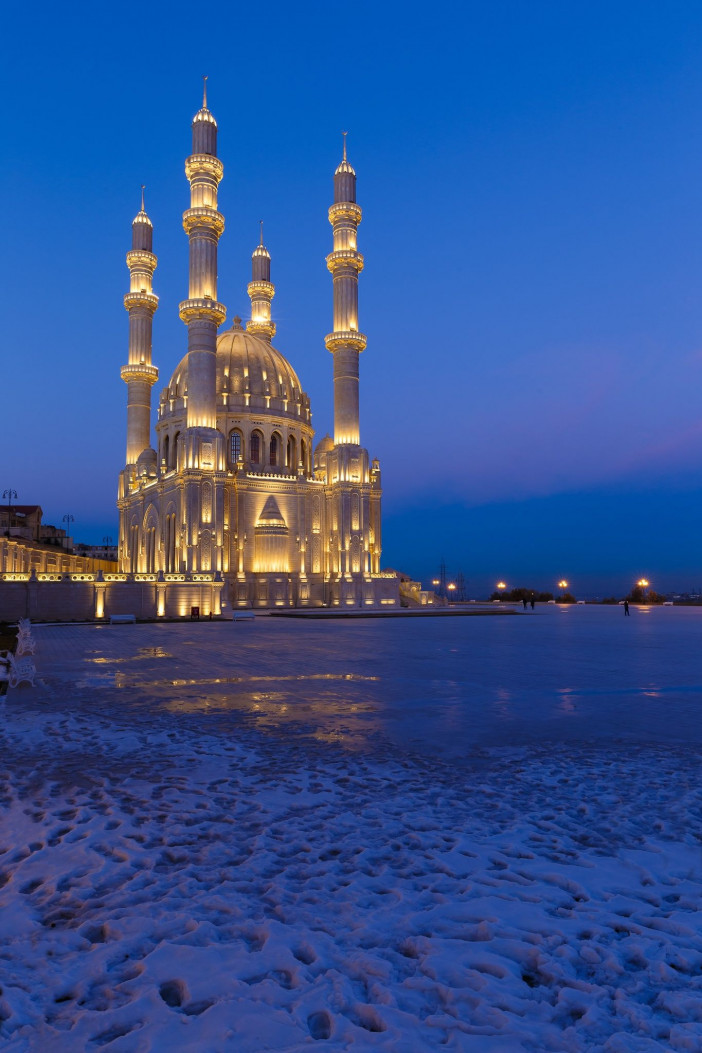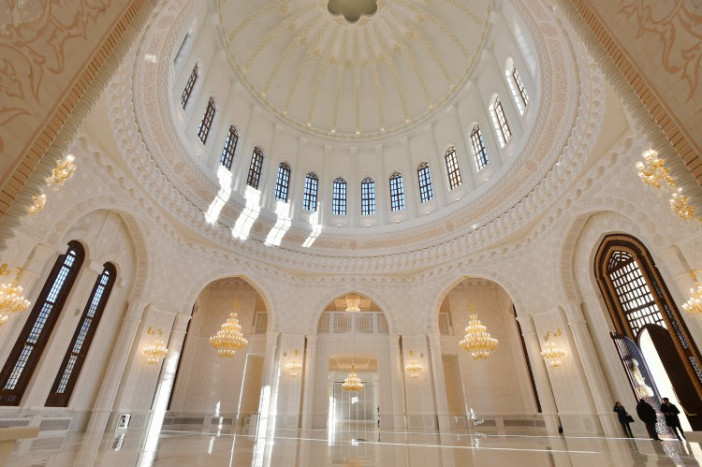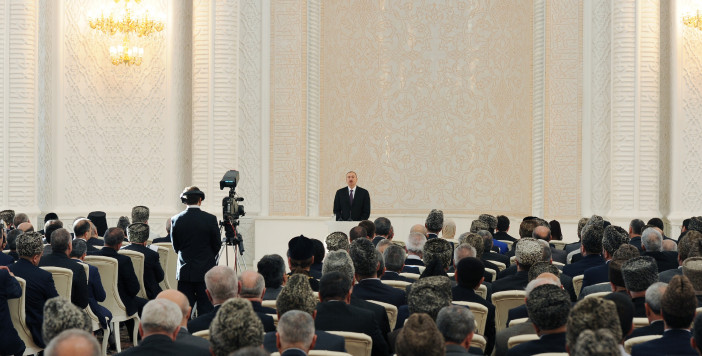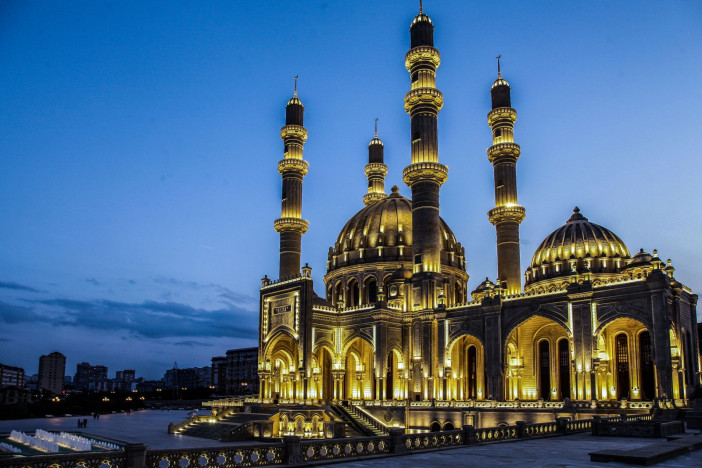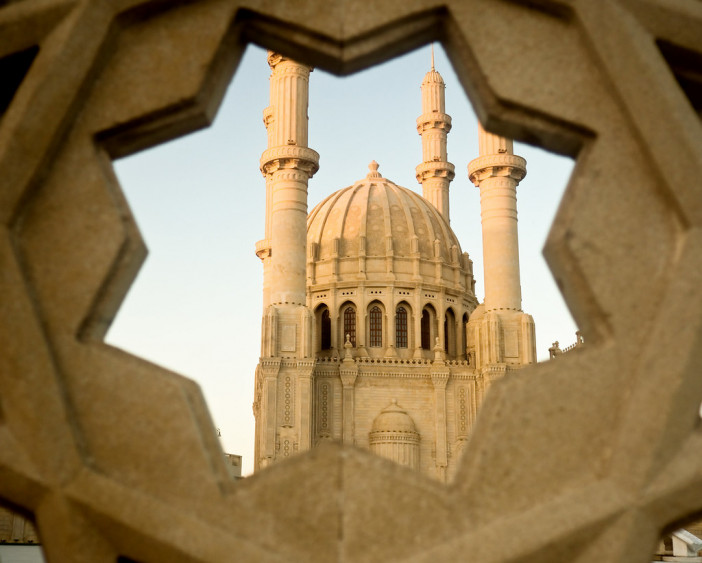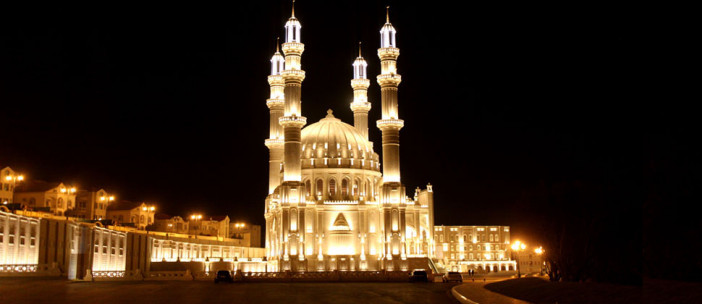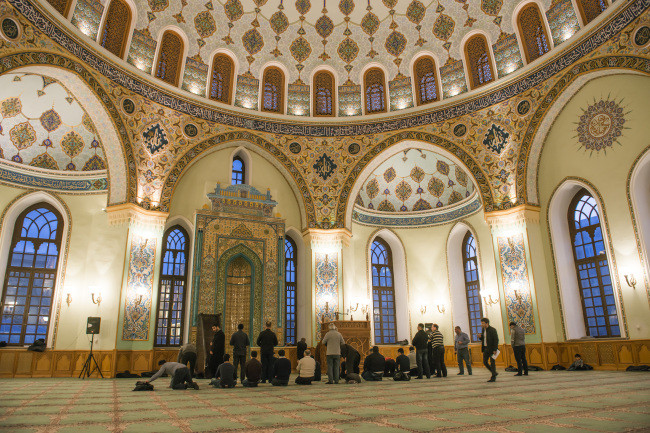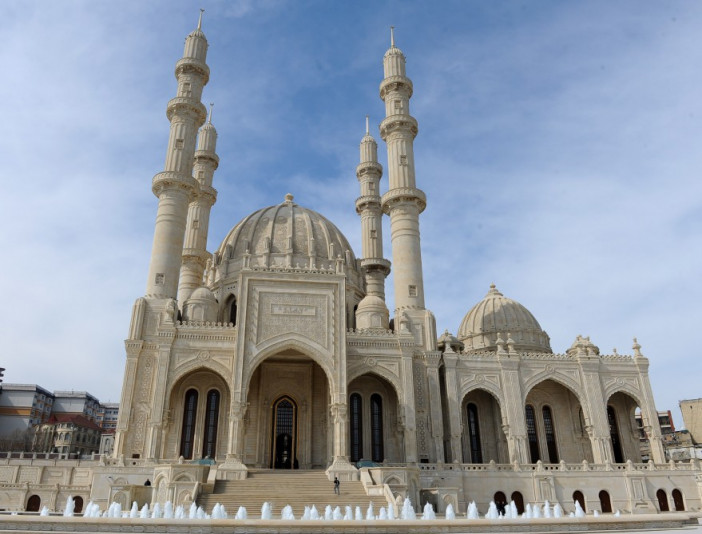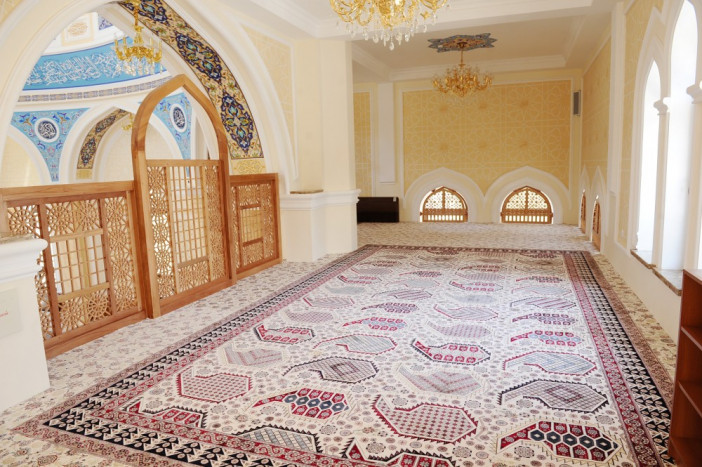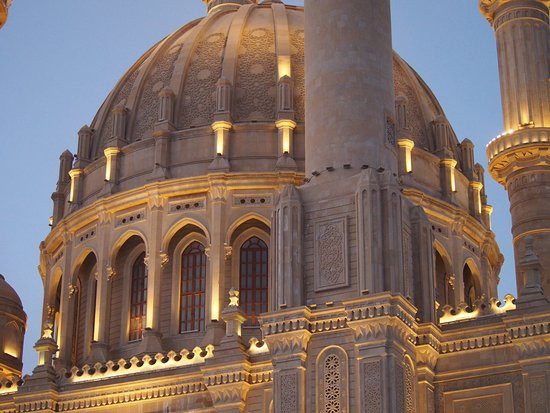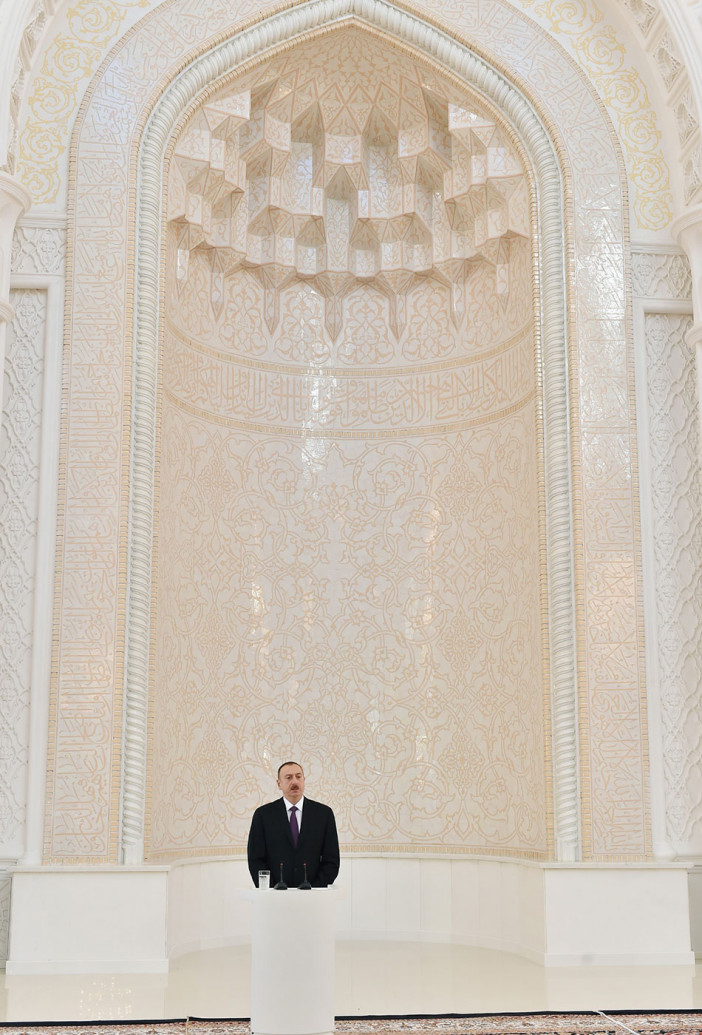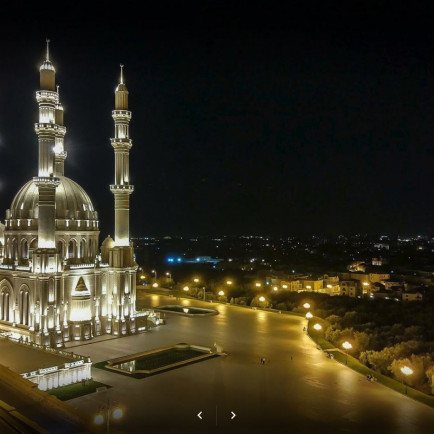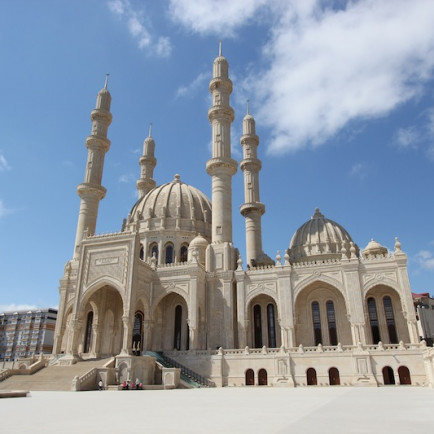Heydar Mosque
History
The order to build the Heydar Mosque was given
by Ilham Aliyev in mid-2012.Construction work began in September 2012
and was completed at the end of 2014. The official opening ceremony of the
mosque took place on December 26, 2014, in which Ilham Aliyev, his spouse Mehriban
Aliyeva, the Chairman of the Coordinating Council of the Muftis of the North
Caucasus and the mufti of Karachay Cherkessia Ismail Berdyev, the Head of
the Baku and Azerbaijan Diocese of the Russian Orthodox Church - Father Alexander
took part , Chairman of the Baku Religious Community of Mountain Jews Melih
Evdaev, Plenipotentiary Representative of the Office of Muslims of the Caucasus
in the Russian Federation Shafik Pshikhachev and chairman of the Caucasian
Muslims Office Sheikh-ul-Islam Allahshukur Pashazade.
Description
Heydar
Mosque is a spectacular and impressive worshiping place for Muslims. Regardless
of their personal religious beliefs, every visitor of Azerbaijan would fancy
the beauty of the building, which itself consists of four 95 meters high
minarets and the large and small domes of the mosque are 55 and 33 meters
high, respectively. The mosque was built in Baku in the architectural
style of Shirvan-Absheron. This mosque is the largest construction
cult-religious architecture not only in Azerbaijan, but also in the entire
South Caucasus, surpassing the impressive Akhmad Kadyrov Mosque in Grozny,
Chechnya, and the Makhachkala Grand Mosque in Dagestan, and is a multicultural
center.
The area
of Heydar Aliyev Mosque is 12,000 square meters. The facade of the mosque is
made of special stone style of Shirvanshah architecture and interior
decoration is made of marble and wood, and the sides of the domes are precisely
decorated with certain passages from the Koran, while the whole mosque is built
in an ancient Azerbaijani architectural style. The carpets of the mosque,
covering 920 m2 in total, are made in resemblance of the famous Sheikh Safi
carpet (that is currently on display at Victoria and Albert Museum in London).
The mosque area has been expanded and new roads laid. Roads have been built to
the mosque from three directions, the area around it landscaped and a
ceremonial hall built.
Named
after Heydar Aliyev – the founder of the modern Azerbaijan and its third
President (1993-2003) – by his son the current President of Azerbaijan, the
Heydar Mosque is not only known for its incredible beauty. Since its
inception, the Mosque has also become a symbol of peace, tolerance and unity.
The mosque was constructed under the instructions of the head of state, and
Under the supervision of President Ilham Aliyev himself.
Speaking
at the opening ceremony of the mosque in December 2014, the President Ilham
Aliyev, in particular, said: “This mosque is named after great leader Heydar
Aliyev. And this is natural. Heydar Aliyev was a great personality. He served
the people of Azerbaijan with dignity at all times. Under his leadership,
Azerbaijan became one of the leading republics.” President Ilham Aliyev also
emphasized the role of late president in preserving the religion and tolerance
in the country: “He always pointed out that while remaining true to our
national and religious customs and traditions, we must build a strong state.
This was his strategic view. The construction and establishment of
relationships between the state and religion is our tremendous success. This
policy continues today. It was under Heydar Aliyev’s leadership that more than
500 mosques were built in Azerbaijan. Hundreds of mosques were repaired.”
In
addition to buttressing the Azerbaijani government’s narrative about the need
for a ‘strong state’, Aliyev’s quote illustrates how mosques have become
important symbols for the leadership to promote its image of tolerance and
multiculturalism. As with the other mosuqes, the new Heydar Mosque is
monumental not just in size, but in the manner that people are encouraged to
engage with it as an object of reverie or an icon, rather than a meaningful
site of democratic worship.
Resources
https://www.inyourpocket.com/baku/heydar-mosque_161222v
https://millenniumtour.az/catalog/view/242/heydar-mosque-
https://bakutravelguide.com/heydar-mosque-baku-azerbaijan/
https://en.wikipedia.org/wiki/Heydar_Mosque
https://en.president.az/articles/13889
Details
Location
9 Həmzə Babaşov Küçəsi, Bakı, Azerbaijan
Worshippers
5000
Owners
President Ilham Aliyev
Year of Build
2014
Area
12000 SQM
Drawings
Map
History
The order to build the Heydar Mosque was given
by Ilham Aliyev in mid-2012.Construction work began in September 2012
and was completed at the end of 2014. The official opening ceremony of the
mosque took place on December 26, 2014, in which Ilham Aliyev, his spouse Mehriban
Aliyeva, the Chairman of the Coordinating Council of the Muftis of the North
Caucasus and the mufti of Karachay Cherkessia Ismail Berdyev, the Head of
the Baku and Azerbaijan Diocese of the Russian Orthodox Church - Father Alexander
took part , Chairman of the Baku Religious Community of Mountain Jews Melih
Evdaev, Plenipotentiary Representative of the Office of Muslims of the Caucasus
in the Russian Federation Shafik Pshikhachev and chairman of the Caucasian
Muslims Office Sheikh-ul-Islam Allahshukur Pashazade.
Description
Heydar
Mosque is a spectacular and impressive worshiping place for Muslims. Regardless
of their personal religious beliefs, every visitor of Azerbaijan would fancy
the beauty of the building, which itself consists of four 95 meters high
minarets and the large and small domes of the mosque are 55 and 33 meters
high, respectively. The mosque was built in Baku in the architectural
style of Shirvan-Absheron. This mosque is the largest construction
cult-religious architecture not only in Azerbaijan, but also in the entire
South Caucasus, surpassing the impressive Akhmad Kadyrov Mosque in Grozny,
Chechnya, and the Makhachkala Grand Mosque in Dagestan, and is a multicultural
center.
The area
of Heydar Aliyev Mosque is 12,000 square meters. The facade of the mosque is
made of special stone style of Shirvanshah architecture and interior
decoration is made of marble and wood, and the sides of the domes are precisely
decorated with certain passages from the Koran, while the whole mosque is built
in an ancient Azerbaijani architectural style. The carpets of the mosque,
covering 920 m2 in total, are made in resemblance of the famous Sheikh Safi
carpet (that is currently on display at Victoria and Albert Museum in London).
The mosque area has been expanded and new roads laid. Roads have been built to
the mosque from three directions, the area around it landscaped and a
ceremonial hall built.
Named
after Heydar Aliyev – the founder of the modern Azerbaijan and its third
President (1993-2003) – by his son the current President of Azerbaijan, the
Heydar Mosque is not only known for its incredible beauty. Since its
inception, the Mosque has also become a symbol of peace, tolerance and unity.
The mosque was constructed under the instructions of the head of state, and
Under the supervision of President Ilham Aliyev himself.
Speaking
at the opening ceremony of the mosque in December 2014, the President Ilham
Aliyev, in particular, said: “This mosque is named after great leader Heydar
Aliyev. And this is natural. Heydar Aliyev was a great personality. He served
the people of Azerbaijan with dignity at all times. Under his leadership,
Azerbaijan became one of the leading republics.” President Ilham Aliyev also
emphasized the role of late president in preserving the religion and tolerance
in the country: “He always pointed out that while remaining true to our
national and religious customs and traditions, we must build a strong state.
This was his strategic view. The construction and establishment of
relationships between the state and religion is our tremendous success. This
policy continues today. It was under Heydar Aliyev’s leadership that more than
500 mosques were built in Azerbaijan. Hundreds of mosques were repaired.”
In
addition to buttressing the Azerbaijani government’s narrative about the need
for a ‘strong state’, Aliyev’s quote illustrates how mosques have become
important symbols for the leadership to promote its image of tolerance and
multiculturalism. As with the other mosuqes, the new Heydar Mosque is
monumental not just in size, but in the manner that people are encouraged to
engage with it as an object of reverie or an icon, rather than a meaningful
site of democratic worship.
Resources
https://www.inyourpocket.com/baku/heydar-mosque_161222v
https://millenniumtour.az/catalog/view/242/heydar-mosque-
https://bakutravelguide.com/heydar-mosque-baku-azerbaijan/
https://en.wikipedia.org/wiki/Heydar_Mosque
https://en.president.az/articles/13889


